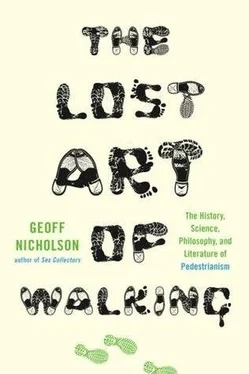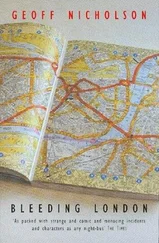Equally, this law may make pedestrians feel especially vulnerable. They are protected from commerce but not from art. It’s illegal for a company, or its advertising agency, to take a picture of you in the street and print it with a headline that says ‘This Man Eats Hamburgers’ or ‘This Man Needs Life Insurance’. But if there’s no headline, or if there’s a caption indicating that this is a piece of street photography taken by a serious street photographer, then you have no recourse. Personally, on balance, I think it is as it should be, but then nobody’s made a ton of money by taking my photograph while I was walking on the street.
Martin Parr and I discussed Winogrand. We talked about his taking photographs from cars, and I said that it didn’t seem quite right to me. Parr was quick to say you could take pictures any way you like — for instance, there’s a British photographer named Tom Wood who takes ‘street photographs’ of a rather special sort — the subjects are often walking in the street, but he’s on a public bus. However, Parr tended to agree there was something not quite right about Winogrand’s method.
‘That’s when he was going bonkers’, said Parr. ‘He knew he was going to die and he was shooting like there was no tomorrow, because for him there was no tomorrow’.
♦
At the time I saw Parr I’d been trying to work out who took the first photograph of somebody walking. It was a natural subject for early photographers, but at first it was an impossible one. The long exposure times required meant that only the stationary world could be recorded and celebrated.
The first photograph to show a person is thought to have been taken in 1839 by Louis-Jacques-Mande Daguerre. It’s called ‘Paris Boulevard’ and it shows trees, what appears to be an empty street, and a solitary standing man. Samuel B. Morse said of it:
‘The boulevard so constantly filled with a moving throng of pedestrians and carriages was perfectly solitary, except for an individual who was having his boots brushed’.
By ‘solitary’ he means deserted. Even though, when the picture was taken, the boulevard was full of pedestrians, they were moving too fast to be fully recorded by the camera and so simply failed to register. To be in motion was to be invisible.
♦
Even Eugene Atget’s photographs of Paris, taken over fifty years later, are haunted by moving specters, blurred ghosts of walkers who pass through the scene too rapidly to be recorded.
Atget himself was a determined walker, but to appear in one of his photographs his subjects had to adopt a posed stillness.
Consequently, the works of William Fox Talbot, Matthew Brady’s Civil War pictures, and William Jackson and Timothy O’Sullivan’s American West are all essentially still lifes. For his 1840 self-portrait Hippolyte Bayard found it useful to depict himself as a drowned man.
There’s a photograph by Charles Negre, dated 1852, that shows three chimney sweeps walking along a Parisian embankment. The pose looks natural enough, and was praised as such by Negre’s contemporaries, but it is a pose. There’s a hint of motion blur, but it comes about because the subjects can’t quite keep still, not because they’re actually walking.
From 1859 onward George Washington Wilson, of Aberdeen, published a series of stereographs, some of which record street scenes. There are certain technical quirks of the stereographic process that help to freeze action. It’s also a fact of photographic life that the farther the subject is from the camera, the slower the shutter speed required to freeze it. Washington Wilson’s stereographs do indeed show people walking. A typical image depicts a crowded Princes Street in Edinburgh, with many pedestrians, but they’re small and far away. You can tell that the people are really walking but you can’t tell the identity of any individual walker.
It was Eadweard Muybridge, in the last quarter of the nineteenth century, with his ‘motion studies’ and his battery of linked cameras, their shutters firing sequentially, who first photographed the process of human walking, although not until after he’d photographed the process of equine trotting. Muybridge had been asked by Leland Stanford to resolve the question of whether all four of a horse’s hooves ever leave the ground at the same time as they move in a fast trot. As we all now know, they do.
Muybridge began considering the matter as early as 1872, but there were gaps in his work, caused by personal crises and professional commitments. A single negative from 1877, now lost, showed Stanford’s horse Occident with all four feet off the ground, and the case was proved, but by then it was clear that Muybridge’s methodology had other uses. In fact, he had photographed people in motion from the time he started his work, but his major investigations into the ways the human body moves were started in 1882 under the patronage of the University of Philadelphia. The results were published as a book titled The Human Figure in Motion: An Electrophotographic Investigation of Consecutive Phases of Muscular Action . (I tried to consult a first edition of this book and failed — a copy is listed in the catalog of the British Library but is declared ‘missing’.) Walking was far from Muybridge’s only concern. He showed men playing tennis, baseball, and cricket, and women dancing together or helping each other bathe. But for me the walking pictures remain the most fascinating because they reveal the magical nature of something we take so much for granted. The revelation is helped along by the fact that the people in the photographs are in most cases partially undressed, and sometimes completely naked.
When I first saw Muybridge’s photographs, knowing little about their origins or purpose, I remember finding them highly charged sexually, not arousing exactly, but nevertheless fetishistic and genuinely odd. I can’t believe I’m alone in this. Muybridge’s figures exist in some strange, unspecified world, moving in front of a black background marked with a white grid. There’s obviously something of an experimental nature going on here, but it doesn’t look precisely or narrowly scientific. It looks more personal and obsessive than that.
Some of the most striking of Muybridge’s images show a naked walking man who from the neck up looks like an ancient patriarch, with wild white hair and beard. From the neck down, however, he looks like a much younger man, with a strong muscular body, and in some of the photographs he’s displaying extremely large testicles. The oblivious and irony-free Rebecca Solnit writes:
‘Halfway through his fifties, he was still straight-backed and strong, though age is apparent in the whiteness of his beard and the strained skin of his neck as he raises a tool.’
The model is Muybridge himself. Erwin Faber, who worked with Muybridge, reported that he looked so much like Santa Claus that when he went walking, children would often stop him in the street and ask for presents.
These days we’re encouraged to see Muybridge’s images as both high art and high science, and Muybridge’s own Victorian public seems to have shown few signs of being shocked or offended by them, which frankly surprises me. Muybridge’s work was available in popular as well as highly expensive limited editions, and he regularly gave public lectures in which he demonstrated his zoopraxiscope, a projector that enabled him to put the separate still images together again and create the illusion of movement.
Muybridge’s zoopraxiscope makes him, by many accounts, the father of the motion picture, and for me this was one of those fall-off-the-chair moments: the point in history at which we could take a still photograph of a man walking was essentially the same moment at which we could also take a moving picture of a man walking.
Читать дальше












